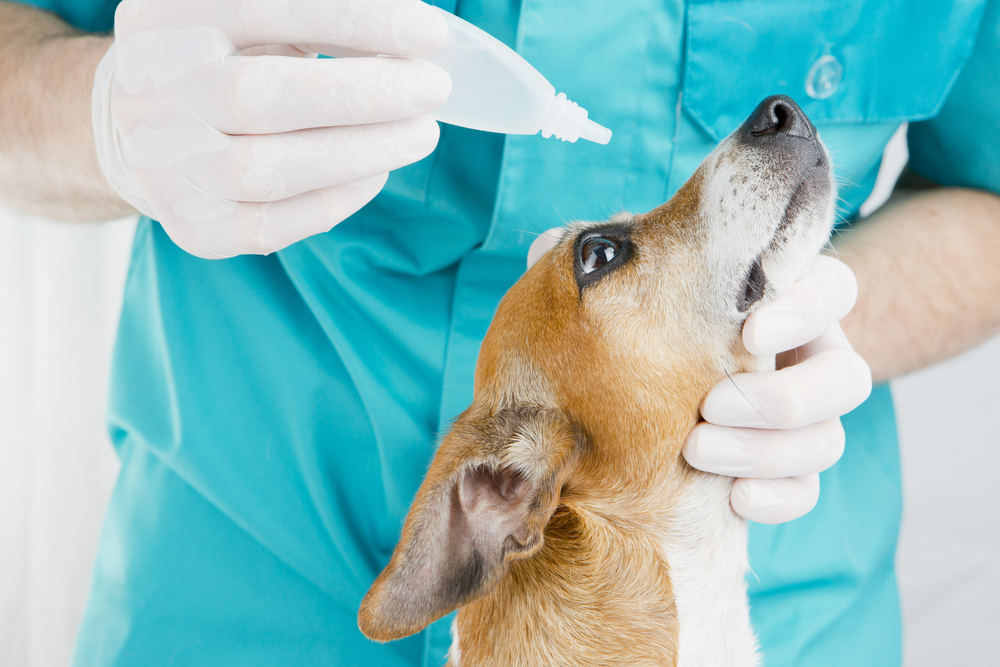You know that an eyelash in your eye is extremely irritating, but what if you were a pet with claws instead of fingers, and a stick fragment in your eye instead of an eyelash? Imagine that excruciating pain. And worse, you can’t tell anyone about how a splinter in your eye feels. This is how your pet suffering with a corneal foreign body likely feels.
What foreign bodies can become stuck in my pet’s cornea?
A foreign body may sound like a large, hazardous object, but any unusual object that is stuck in your pet’s eye constitutes a foreign body. If your pet ventures outdoors, they can be exposed to all manner of debris, including grass blades, seeds, thorns, splinters, dirt, and other objects. Indoor pets can develop corneal foreign bodies from fibers, glass, metal, or a nail from a too-rough housemate.
What part of my pet’s eye is the cornea?
The cornea is the transparent, shiny layer of your pet’s eye that acts as the first protective barrier for the eye, but also is most susceptible to injury. The cornea consists of three layers:
- Epithelium — The outermost layer, a thin layer of cells
- Stroma — The main supportive tissue of the cornea
- Descemet’s membrane — The deepest layer in the cornea
Injuries can cause ulcers that permeate through to the bottom layer.
Typically, your pet’s third eyelid, the nictitating membrane, does an excellent job protecting the eye from injury. But, foreign objects can still work their way into your pet’s eye and damage the cornea.
How will I know if my pet has something in their eye?
A corneal foreign body is painful, especially if an ulcer is forming. Although eye conditions can have similar signs, your pet who has something stuck in their eye may show these signs:
- Squinting
- Excessive tearing
- Mucoid or pus-like ocular discharge
- Reddened conjunctiva
- Sensitivity to light
- Excessive pawing at or rubbing of the eyes
- Swelling of the eyelids or eyeball
- Protrusion of the third eyelid
- Lethargy
- Decreased appetite
- Visible foreign object in the eye
Ocular conditions in pets can quickly become worse if left untreated. If you notice any of the above signs in your furry pal, contact Veterinary Vision Center right away.
What types of corneal injuries can foreign bodies cause?
Two types of corneal injuries occur in pets—penetrating and perforating. The type of injury determines your pet’s treatment plan. A penetrating injury occurs when a foreign object enters the eye, but does not puncture the cornea or sclera (i.e., the white part of the eye). A perforating injury, which occurs when a foreign object passes through the cornea or sclera, is typically much more serious.
How is a corneal foreign body detected in my pet?
Detecting a foreign body in your pet’s eye is generally fairly simple. If your furry pal is particularly uncomfortable and Dr. Pierce cannot see a foreign object, we will administer a topical anesthetic to the eye, to allow us to push the third eyelid out of the way and search for a stuck nail shard or splinter. To determine if your pet has developed a corneal ulcer from the foreign body, we’ll also apply a fluorescein stain to the eye to look for a corneal breach.
How is my pet’s corneal foreign body treated?

If the foreign body is adhered to the outermost corneal layer, we can usually remove it with vigorous flushing, or ophthalmic forceps after administering topical anesthesia. If the foreign body is embedded in the deeper corneal layers, general anesthesia is required for careful removal. After the foreign object has been removed, your pet will likely require topical and systemic antibiotics, topical pain relievers, systemic NSAIDs, and an Elizabethan collar. Frequent follow-up exams will be necessary to ensure your pet’s eye is healing properly and their treatment protocol is correct.
If you notice your pet pawing at their eye, squinting, or suffering from ocular discharge, don’t wait. Contact our Veterinary Vision Center team to schedule an appointment to get your pet immediate relief.







[…] a foreign body in your eye is one of the most frustrating experiences, and this is no different for your Springer Spaniel. […]